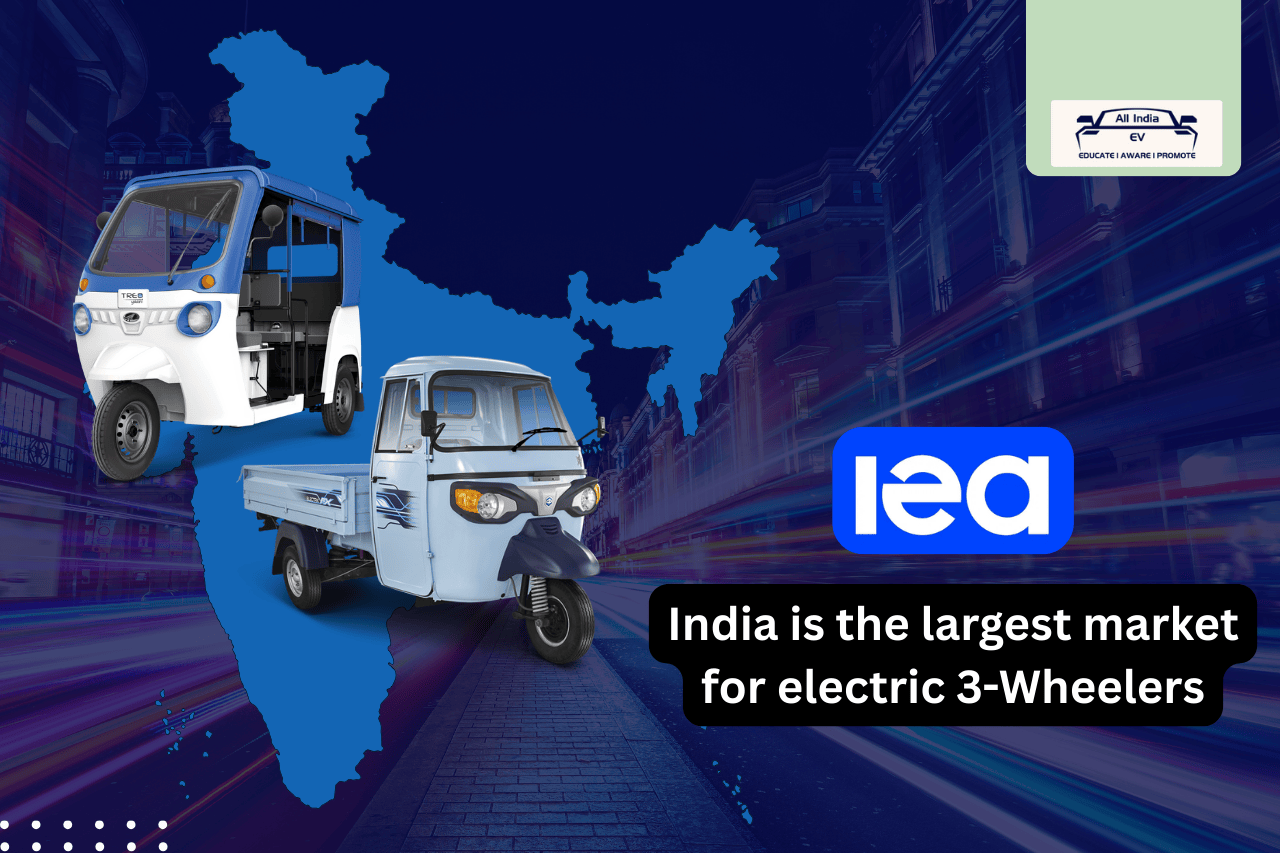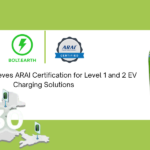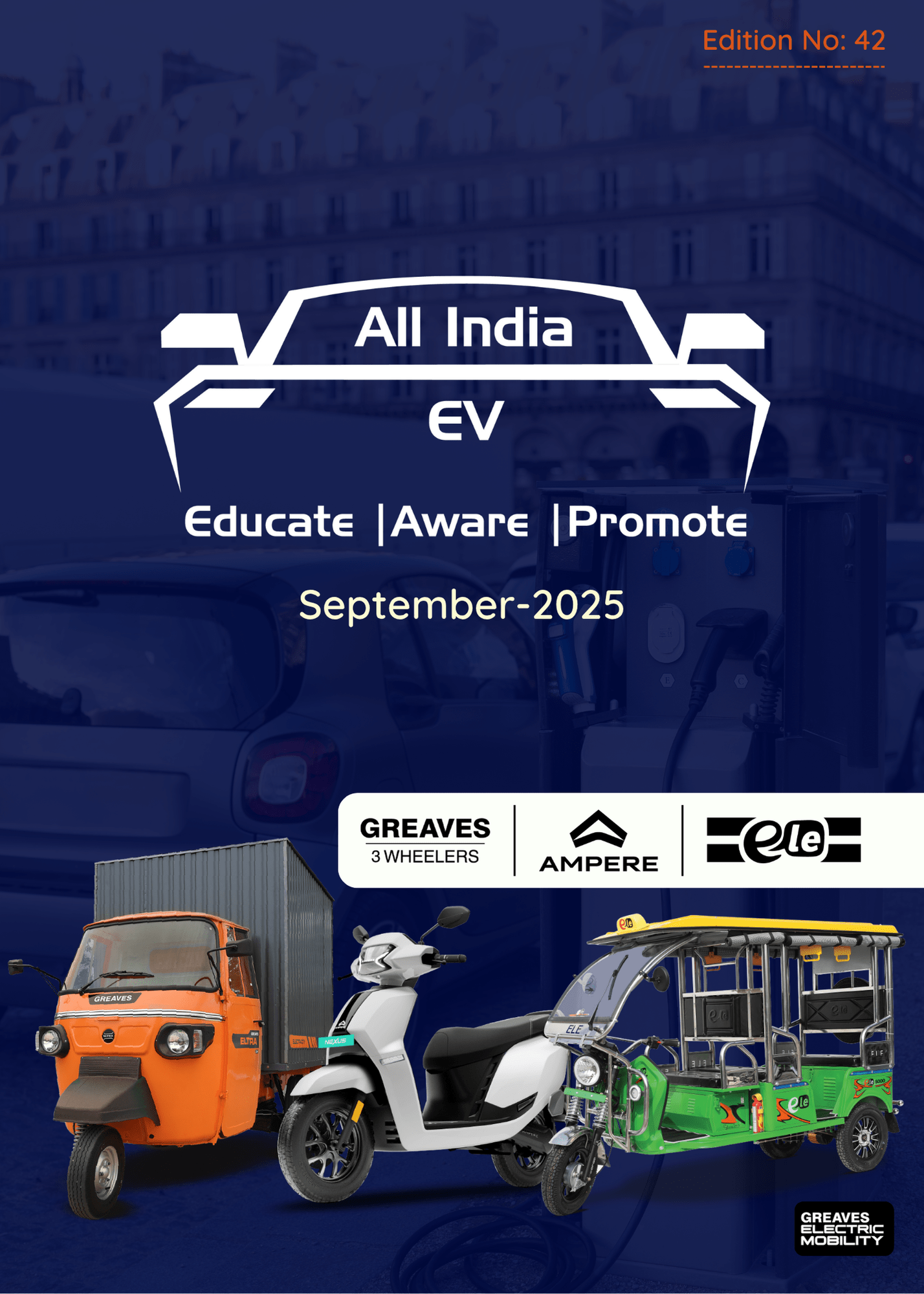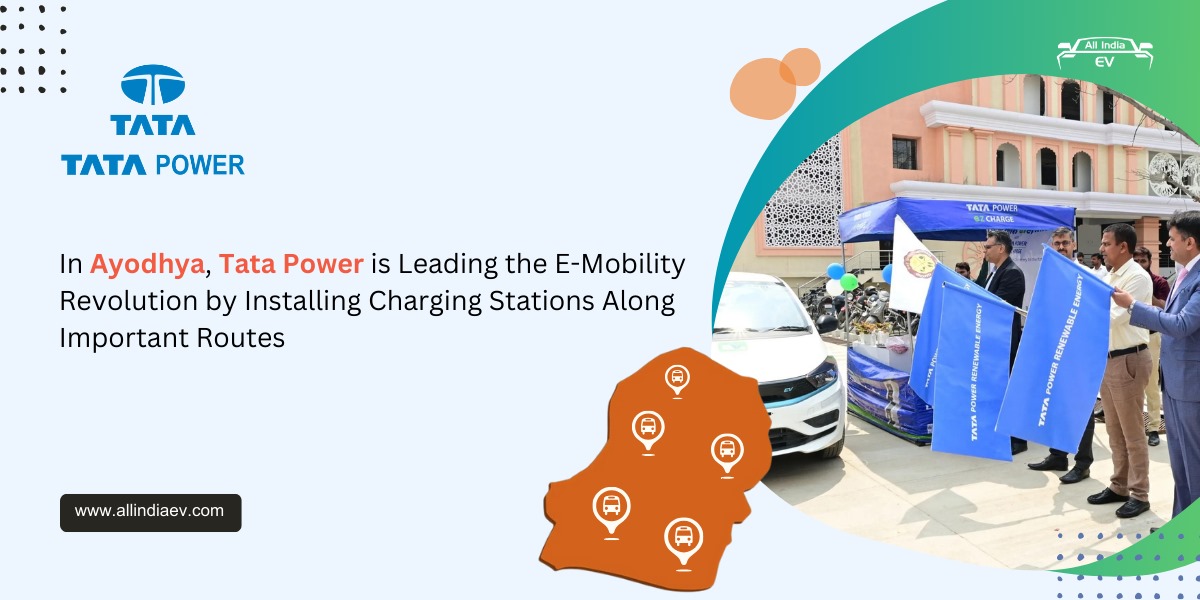
India Leads Global Electric 3-Wheelers Market Growth: IEA’s 2025 EV Outlook Highlights India’s Dominance in EV Expansion
India has emerged as the undisputed global leader in electric three-wheeler (e-3W) adoption for the second consecutive year, according to the latest Global EV Outlook 2025 by the International Energy Agency (IEA). The report reveals that e-3W sales in India grew nearly 20% year-on-year, reaching approximately 7 lakh units in 2024 — the highest in the world.
Despite a 5% contraction in the overall global three-wheeler market, electric variants defied the trend by growing over 10% to surpass 1 million units globally. India led this surge, even overtaking China in 2023 to become the top e-3W market — a position it maintained in 2024.
Electric three-wheelers now account for a record 57% of all three-wheeler sales in India, up from 54% in 2023. This robust growth is driven by increasing demand for commercial mobility solutions and strong policy support, especially through the recently launched PM E-DRIVE scheme. The scheme earmarks funding for over 3 lakh electric three-wheelers aimed at commercial use, addressing a segment that had an estimated 1 crore vehicle fleet (both electric and ICE) in 2023.
✅ India Dominates 2W/3W EV Space in Asia
India, China, and Southeast Asia continue to dominate the two- and three-wheeler (2/3W) EV space, accounting for nearly 80% of global sales in 2024. In India, electric two-wheeler (e-2W) adoption is also on the rise, with sales crossing 1.3 million units in 2024 — capturing a 6% share of the overall 2W market. The country now hosts 220 OEMs, up from 180 in 2023, although the top four players still control 80% of the market.
Competition is pushing prices down and accessibility up. Indian EV giant Ola Electric introduced its entry-level S1X model at a price of ₹70,000 — below the average for the top five ICE 2Ws — helping to bridge the affordability gap for budget-conscious buyers.
Policy interventions under PM E-DRIVE are also easing the financial burden. The scheme provides purchase subsidies of up to ₹5,000 per kWh for 2Ws with lithium-ion batteries. With a total allocation of USD 1.3 billion, it aims to support 2.5 million electric 2Ws through March 2026 — a significant jump from the 1 million target under FAME-II.
✅ India’s EV Manufacturing Capacity Surges
India’s EV manufacturing landscape is witnessing exponential growth. In 2024, the country’s top 80 e-2W manufacturers reported a combined production capacity of 10 million units, nearly 8 times higher than domestic sales. If current expansion plans materialize, the capacity is projected to rise to 17 million units in the near future — positioning India as a future global manufacturing hub for e-2Ws.
✅ Electric Cars: Slow but Steady Progress
While the e-2W and e-3W segments thrive, the Indian electric car market is growing at a modest pace. EV car sales crossed the 1 lakh mark in 2024, accounting for about 2% of total car sales. Growth remains steady, with 35,000 units sold in Q1 of 2025 — a 45% year-on-year increase.
High import duties continue to shield domestic manufacturers, limiting Chinese imports to less than 15% of India’s EV car market. Although Chinese automaker SAIC offers the locally assembled MG Comet EV under USD 8,000, the average price of imported EVs remains double that of Indian-made models. In 2024, all BEVs made by Indian OEMs were priced below USD 20,000, while none of the Chinese imports matched that affordability.
The price gap between electric and internal combustion engine (ICE) cars also narrowed in 2024 — falling below 15% for small cars and 25% for SUVs, improving the economic case for EV adoption.
✅ Electric Bus Fleet Quadruples Since 2020
India’s public transport sector is also rapidly electrifying. The IEA report highlights that the country’s electric bus stock has surged from under 3,000 in 2020 to more than 11,500 by the end of 2024. This dramatic rise reflects strong government investment and a growing preference for sustainable transit systems across Indian cities.
✅ Conclusion:
India’s electric vehicle market, led by its dominance in the three-wheeler and two-wheeler segments, continues to build global momentum. As policies mature and domestic manufacturing scales up, India is not just adopting EVs — it is shaping the future of clean mobility.










